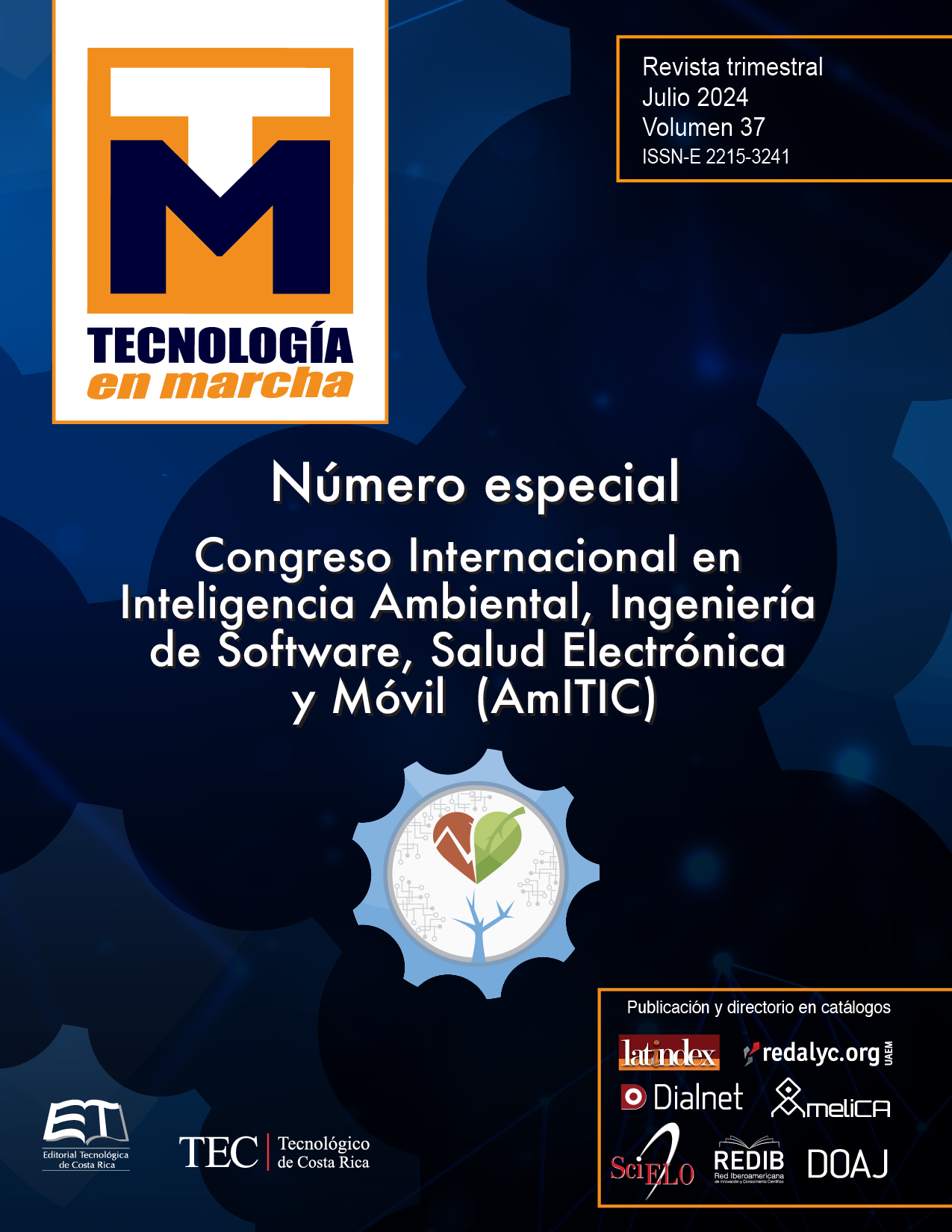The General in his Labyrinth: A 2D Video Game Adaptation for Cultural Education in Unity
Main Article Content
Abstract
This poster presents the development of an educational video game based on the novel “The General in his Labyrinth” by Gabriel García Márquez, focused on the context of e-learning applied to mobile environments. The objective of the project is to provide users with an interactive and attractive learning experience, taking advantage of the advantages that mobile devices offer in accessing information and learning. The initiative to turn the literary work into a video game could have educational advantages. The main goal is to promote literacy, attracting students who may not be interested in traditional reading. The interactive nature of the game has the potential to spark students’ curiosity about literature and motivate them to research the original book. In its 2D version, Unity allows you to create game environments and graphics in two dimensions, which is ideal for developing a game based on a literary work like this one. Unity makes it easy to incorporate elements of the story, characters, and literary world into an interactive game context thanks to its friendly interface and accessible development tools. It also seeks to promote cultural awareness around Simón Bolívar, who is a significant historical figure in Colombia. The video game, designed specifically for computers and mobile devices, combines the narrative power of an iconic novel with gamification elements. In this way, it seeks to promote interest in the literature and history of Colombia, while promoting cultural and civic values.
Article Details

This work is licensed under a Creative Commons Attribution-NonCommercial-NoDerivatives 4.0 International License.
Los autores conservan los derechos de autor y ceden a la revista el derecho de la primera publicación y pueda editarlo, reproducirlo, distribuirlo, exhibirlo y comunicarlo en el país y en el extranjero mediante medios impresos y electrónicos. Asimismo, asumen el compromiso sobre cualquier litigio o reclamación relacionada con derechos de propiedad intelectual, exonerando de responsabilidad a la Editorial Tecnológica de Costa Rica. Además, se establece que los autores pueden realizar otros acuerdos contractuales independientes y adicionales para la distribución no exclusiva de la versión del artículo publicado en esta revista (p. ej., incluirlo en un repositorio institucional o publicarlo en un libro) siempre que indiquen claramente que el trabajo se publicó por primera vez en esta revista.
References
García Márquez, G. (1989). El General en su laberinto. Editorial XYZ.
Smith, J. (2017). “The Art of Game Adaptation: Balancing Fidelity and Creativity.” Journal of Digital Media Studies, 12(3), 45-62. [Enlace a la revista: https://www.examplelink.com/journal-of-digital-media-studies]
Brown, P. (2018). Critical Thinking in Education. Journal of Educational Psychology, 110(3), 308-319.
David Vallejo, C. M. (2015). Desarrollo de Videojuegos: Un Enfoque Práctico. Vol 1: Arquitectura del Motor. ESI.
Jones, A. (2019). “Cultural Representation in Video Games: Navigating Challenges and Opportunities.” International Journal of Cultural Studies, 25(2), 167-184. [Enlace a la revista: https://www.examplelink.com/international-journal-of-cultural-studies]
Jones, A. (2020). Cultural Awareness in Educational Settings. International Journal of Cultural Studies, 15(2), 187-203.
Unity Technologies. (n.d.). Animator component (componente animator). Unity3d.com. Retrieved November 23, 2023, from https://docs.unity3d.com/es/530/Manual/class-Animator.html
Vives, V. (29 de septiembre de 2021). Los videojuegos como herramienta educativa. Obtenido de vivens vives blog: https://blog.vicensvives.com/los-videojuegos-como-herramienta-educativa/
Smith, J. (2017). The Impact of Video Games on Literacy. Journal of Educational Technology, 42(3), 221-234.

